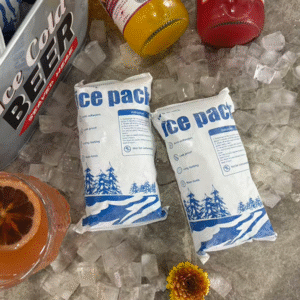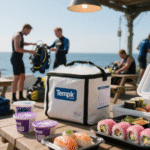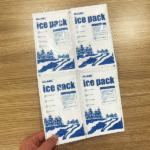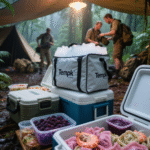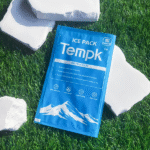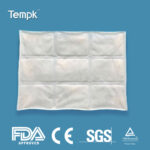Einführung
Die Aufrechterhaltung einer präzisen Temperaturkontrolle ist in der modernen Welt zu einem entscheidenden Erfolgsfaktor geworden Kaltkettenlogistik. Da Lieferketten immer komplexer werden und die Anforderungen an die Nachhaltigkeit steigen, Unternehmen müssen übernehmen innovative Kühllösungen die sowohl effizient als auch umweltbewusst sind.
Trockeneisschaum und Eisbeutel sind jetzt führend und bieten eine hervorragende Temperaturstabilität für empfindliche Produkte wie Impfungen, Meeresfrüchte, und Spezialitäten. In diesem Leitfaden, Sie erfahren, wie diese Tools die Logistikeffizienz steigern, Sicherheit, und Compliance in der gesamten globalen Lieferkette.
-
Wie Trockeneisschaum die thermische Stabilität verbessert und Transportrisiken verringert
-
Warum Trockeneisbeutel ideal für den Pharma- und Lebensmittelversand sind
-
Best Practices für Handhabung und Sicherheit in der temperaturempfindlichen Logistik
-
Letzte 2025 Innovationen, die Kühlkettenverpackungen und Nachhaltigkeit prägen
1. Was Trockeneisschaum zu einer idealen Kühllösung für die Logistik macht?
Trockeneisschaum sorgt für hohe Isolierung und konstante Kühlleistung, Dies macht es zu einer bevorzugten Wahl für Langstrecken- und Kühlkettenlieferungen auf der letzten Meile. Seine einzigartige Zellstruktur minimiert den Sublimationsverlust und bewahrt die Produktintegrität auch bei extremen Temperaturschwankungen.
Warum Unternehmen Trockeneisschaum gegenüber herkömmlichen Kältemitteln bevorzugen
Trockeneisschaum bietet gleichmäßige Kältespeicherung, Das bedeutet, dass die Temperatur im gesamten Laderaum stabil bleibt. Herkömmliche Gelpackungen oder Wassereis haben oft Schwierigkeiten, über einen längeren Zeitraum niedrige Temperaturen aufrechtzuerhalten, insbesondere bei mehrtägigen Transporten.
Zusätzlich, Die Die Schaumstruktur absorbiert die CO₂-Gasfreisetzung nach und nach, Gewährleistung der Sicherheit und Verlängerung der Produktlebensdauer. Logistikmanager wissen es zu schätzen leichte Natur, was sich in niedrigeren Transportkosten niederschlägt – ein wichtiger Gesichtspunkt für Pharma- und Lebensmittelexporteure.
| Besonderheit | Trockeneisschaum | Traditionelles Eis | Auswirkungen auf das Geschäft |
|---|---|---|---|
| Kühldauer | Bis zu 72 Std. | 12–24 Stunden | Weniger Nachfüllzyklen, niedrigere Kosten |
| Gewichtseffizienz | Leicht | Schwer | Reduzierte Frachtkosten |
| Temperaturbereich | -78.5°C konstant | 0°C | Ermöglicht eine Ultra-Kühlkette |
| Nachhaltigkeit | Recycelbare Schaumstoffe | Begrenzte Wiederverwendung | Unterstützt ESG-Compliance |
Wichtige Erkenntnisse für Logistikmanager
-
Verbessern Sie die Routenzuverlässigkeit: Verwenden Sie Trockeneisschaum für Langstreckenrouten mit wechselndem Klima.
-
Reduzieren Sie Verschwendung: Minimieren Sie Produktverluste aufgrund von Temperaturschwankungen.
-
Geringerer CO2-Fußabdruck: Wählen Sie Schaumstoffe aus recycelten CO₂-basierten Polymeren.
Beispiel: Ein globaler Exporteur von Meeresfrüchten, der Trockeneisschaum verwendet, reduzierte die Verderbrate um 23% und Versandkosten per 12% im Vergleich zu herkömmlichen gelbasierten Kühlsystemen.
2. Wie stellen Trockeneisbeutel die Temperaturintegrität beim Pharma- und Lebensmitteltransport sicher??
Trockeneisbeutel bieten eine präzise kontrollierte Kühlung kritischer Güter, Sicherstellen, dass die Temperatur innerhalb der strengen Toleranzgrenzen für Arzneimittel bleibt, Biologika, und verderbliche Nachhalle.
Anwendungen in Branchen
-
Pharmazeutische Logistik: Impfungen, Insulin, und biologische Proben erfordern stabile Minustemperaturen. Trockeneisbeutel können die Erhaltung gewährleisten -20° C bis -80 ° C., Gewährleistung der Einhaltung BIP (Gute Vertriebspraxis) Richtlinien.
-
Lebensmittelverteilung: Fleisch, Meeresfrüchte, Molkerei, und Gourmetartikel bleiben ohne Bakterienwachstum frisch.
-
E-Commerce und Essenssets: Trockeneisbeutel ermöglichen eine effiziente Lieferung temperaturempfindlicher Produkte direkt an die Verbraucher und wahren gleichzeitig den Ruf der Marke.
Leistungsvergleich: Trockeneisbeutel vs. Gelpackungen
| Kühlende Eigenschaft | Trockeneisbeutel | Gelpackung | Wirkliche Auswirkungen |
|---|---|---|---|
| Temperaturbereich | -78° C bis -20 ° C. | 0° C bis 5 ° C. | Ideal für Impfstoffe, nicht nur Essen |
| Dauer | 24–72 Stunden | 12–24 Stunden | Reduziert den Bedarf an Nachfüllungen |
| Einhaltung | Erfüllt WHO- und IATA-Standards | Beschränkt | Zugelassen für den medizinischen Versand |
| Sicherheit | Belüftet und isoliert | Nicht belüftet | Verhindert Gasbildung in der Verpackung |
Ergebnis: Trockeneisbeutel sind das Rückgrat von moderne temperaturgeführte Logistik, vereint Zuverlässigkeit mit betrieblicher Flexibilität.
3. Welche Sicherheitsmaßnahmen beim Umgang mit Trockeneis während des Transports unerlässlich sind?
Sicherheit in der Logistik geht über die Produktintegrität hinaus – sie betrifft auch Wohlbefinden der Mitarbeiter und Einhaltung gesetzlicher Vorschriften.
Sichere Handhabungspraktiken
-
Belüftete Behälter verwenden: Verhindern Sie die Bildung von CO₂-Gas während der Sublimation.
-
Tragen Sie Schutzhandschuhe: Direkter Kontakt kann Erfrierungen verursachen.
-
Beschriften Sie Pakete deutlich: Geben Sie „Trockeneis – UN1845“ mit korrektem Gewicht an.
-
Halten Sie den Luftstrom in Fahrzeugen aufrecht: Insbesondere bei Massentransporten, um Sauerstoffmangel zu vermeiden.
Temperatur- und CO₂-Management
Um eine optimale Leistung zu gewährleisten, pflegen CO₂-Konzentration unten 5000 ppm auf engstem Raum. Dadurch werden Gesundheitsrisiken vermieden und gleichzeitig internationale Transportstandards eingehalten.
Fallstudie: Ein Pharmaversand führte automatische CO₂-Entlüftungssysteme in seinen Kühlfahrzeugen ein und reduzierte die Unfallrate um 30% und verbessert gleichzeitig die Ergebnisse bei behördlichen Prüfungen.
Zusammenfassung der Sicherheitscheckliste
-
✅ Handschuhe und Augenschutz während der Handhabung
-
✅ Isolierte, aber belüftete Verpackung
-
✅ CO₂-Überwachung in geschlossenen Umgebungen
-
✅ Schulung für Lager- und Logistikmitarbeiter
4. Wie können Kühlkettenunternehmen ihre Effizienz mit Trockeneisschaumsystemen optimieren??
Die Effizienz in der Kühlkettenlogistik hängt heute von Daten ab, Automatisierung, und nachhaltige Materialien. Trockeneisschaumsysteme unterstützen alle drei.
Integrieren Sie Trockeneisschaum in Ihren Betrieb
-
Routenoptimierung: Kombinieren Sie die Schaumisolierung mit Echtzeit-Temperaturdaten, um die Häufigkeit von erneuter Vereisung zu minimieren.
-
Speicherverwaltung: Verwenden Sie modulare Schaumstoffeinlagen, um die Verpackung zu standardisieren und Abfall zu reduzieren.
-
Hybridkühlung: Kombinieren Sie Schaumstoff mit Phasenwechselmaterialien (PCM) für flexible Temperaturbereiche.
Messbare Geschäftsvorteile
| Metrisch | Vor Trockeneisschaum | Nach der Implementierung | Operatives Ergebnis |
|---|---|---|---|
| Verderbnisrate | 8% | 2% | +6% Qualitätsverbesserung |
| CO₂-Emissionen | 100 Einheiten | 70 Einheiten | 30% Reduktion |
| Arbeitskosten | Hoch | Mäßig | Automatisierte Kühleinrichtung |
| Compliance-Score | 80% | 98% | Revisionssichere Logistik |
Praktischer Tipp: Schulen Sie Ihr Lagerteam im effizienten Umgang mit Schaumstoffeinlagen. Durch ihre Wiederverwendbarkeit können jährlich Tausende an Verpackungsmaterialien eingespart werden.
5. Ökologische Nachhaltigkeit: Ist Trockeneisschaum wirklich umweltfreundlich??
Ja - Moderne Trockeneisschaumsysteme sind auf Nachhaltigkeit ausgelegt. Im Gegensatz zu herkömmlichen Kältemitteln, die auf synthetische Chemikalien angewiesen sind, Trockeneisschaum verwendet CO₂ eingefangen aus industriellen Prozessen.
Übersicht über die ökologischen Vorteile
-
Kohlenstoffnutzung im geschlossenen Kreislauf: Aufgefangenes CO₂ wird wiederverwendet, nicht abgegeben.
-
Recycelbare Isolierung: Schaumstoffkomponenten können für zukünftige Lieferungen wiederaufbereitet werden.
-
Reduzierte Wasserverschwendung: Im Gegensatz zu Eis, Es treten keine Schmelzrückstände oder Undichtigkeiten auf.
Ausrichtung an ESG- und Unternehmenszielen
B2B-Käufer benötigen zunehmend Kohlenstoffverantwortung. Der Einsatz CO₂-basierter Kühlung kann angerechnet werden Umfang 3 Emissionsreduzierungen im Rahmen vieler globaler Nachhaltigkeitsrahmen.
| Nachhaltigkeitsmetrik | Trockeneisschaum | Traditionelles Eis | Vorteil |
|---|---|---|---|
| Wasserverbrauch | Keiner | Hoch | Reduziert Abfall |
| Recyclingfähigkeit | Hoch | Niedrig | Erhöht die Wiederverwendungsrate |
| Kohlenstoffquelle | Eingefangenes CO₂ | Frisches CO₂ | Zirkulärer Prozess |
Beispiel: Ein europäischer Pharmahändler hat es geschafft Netto-Null-Kühlbetrieb durch die Kombination erneuerbarer Energie mit recyceltem CO₂-basiertem Trockeneisschaum.
6. 2025 Trends: Die Zukunft der Trockeneisschaum- und Eisbeutellogistik
Technologische Fortschritte
-
Smart Sensoren: Eine kontinuierliche IoT-Überwachung sorgt für Transparenz und Nachvollziehbarkeit.
-
KI-Routenplanung: Vorhersagealgorithmen schlagen optimale Kühllasten basierend auf der Versanddauer und der geografischen Lage vor.
-
Verpackung der nächsten Generation: Biobasierte Schäume reduzieren den Müll auf Deponien und bewahren gleichzeitig die thermische Integrität.
Markteinsichten
Entsprechend Ausblick auf den Kühlkettenmarkt 2025, Die Weltmarkt für Trockeneislogistik wird erreichen $8.7 Milliarde, wächst bei a 7.4% CAGR, getrieben durch den Transport von Impfstoffen und den grenzüberschreitenden Lebensmittelhandel.
Neue Chancen:
-
Integration von CO2-neutrale Trockeneisherstellung
-
Wachstum in Kühllösungen für die letzte Meile für E-Commerce
-
Annahme von automatische Wiedergefrierstationen an Logistikzentren
7. FAQs: Beantwortung häufiger Fragen zur Kühlkette
Q1: Wie lange ist Trockeneisschaum während des Transports haltbar??
Typischerweise 48 Zu 72 Std., abhängig von Isolierung und Umgebungstemperatur. Schaumisolierung reduziert die Sublimation, Verlängerung der Dauer um bis zu 30% im Vergleich zu losem Trockeneis.
Q2: Ist Trockeneisschaum für den Arzneimitteltransport sicher??
Ja. Es entspricht BIP und IATA Standards und sorgt für stabile ultrakalte Bedingungen ohne chemische Rückstände.
Q3: Kann Trockeneisschaum wiederverwendet werden??
Absolut. Viele Schaumstoffstrukturen sind dafür konzipiert mehrere Zyklen, Reduzierung von Abfall und Kosten pro Sendung.
Q4: Was ist die ideale Temperatur für den Impfstofftransport mit Trockeneisbeuteln??
Zwischen -60°C und -80°C, Gewährleistung der biologischen Stabilität ohne Frostschäden.
Q5: Gibt es Umweltbedenken bei Trockeneis??
Nicht bei Herstellung aus recycelte CO₂-Quellen. Der Prozess dient der Wiederverwendung von Emissionen, Unterstützung der Grundsätze der Kreislaufwirtschaft.
8. Zusammenfassung und Empfehlungen
Key Takeaways:
-
Trockeneisschaum sorgt für eine stabile Kühlung, lange Dauer, und Ökoeffizienz.
-
Trockeneisbeutel sind für Arzneimittel und verderbliche Waren, die eine strenge Einhaltung erfordern, von wesentlicher Bedeutung.
-
Die Integration beider Lösungen verbessert sich Betriebssicherheit und reduziert die Umweltbelastung.
Aktionsplan für Logistikleiter:
-
Überprüfen Sie Ihre aktuellen Temperaturkontrollsysteme.
-
Führen Sie Trockeneisschaum für Langstrecken- oder hochwertige Fracht ein.
-
Schulen Sie Ihre Mitarbeiter in Best Practices für CO₂-Sicherheit und Wiederverwendbarkeit.
-
Arbeiten Sie mit Lieferanten zusammen, die Angebote anbieten CO2-neutrale Schaumstoffe.
Für die Spitze: Beginnen Sie klein mit einem regionalen Pilotprogramm, bevor Sie es unternehmensweit skalieren, um Einsparungen und CO₂-Auswirkungen genau zu messen.
Über Tempk
Bei Tempk, Wir spezialisieren uns auf fortschrittliche Kühlkettenverpackungs- und Temperaturkontrolltechnologien für globale Logistiknetzwerke. Unsere Expertise liegt in der nachhaltigen Gestaltung, Hochleistungskühlsysteme – von Trockeneisschaumeinlagen Zu Wiederverwendbare Eisbeutel — zugeschnitten auf Pharma, Biotech, und Lebensmittelsektor.
Mit über einem Jahrzehnt Erfahrung in der Optimierung der Kühlketteninfrastruktur, Wir helfen Unternehmen, Abfall zu reduzieren, Kosten senken, und ESG-Ziele erreichen.
Bereit, Ihre Logistikeffizienz zu transformieren?
👉 Contact Tempk today for expert consultation on integrating dry ice foam and ice packs into your cold chain strategy.






